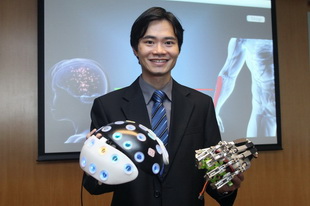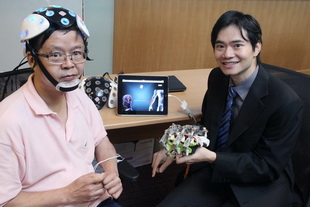|
|
|
|
|
|
|
World’s first Brain Training Device helps stroke patients to reconnect their brains and limbs |
|||
|
World’s first Brain Training Device helps stroke patients to reconnect their brains and limbs
|
Effective motor recovery after stroke depends on intensive voluntary practice of the paretic limbs. However, existing rehabilitation products do not use brainwave to guide patients to identify voluntary intention and to relearn how to reconnect to their paralyzed limbs. In this issue, Prof. Raymond Tong Kai-yu at PolyU’s Interdisciplinary Division of Biomedical Engineering (BME) will introduce his invention - Brain Training Device, which was developed together with his team members in BME and PolyU’s Industrial Centre. Details>> How can the Brain Training Device help stroke patients?The Brain Training Device can guide stroke patients to relearn the reconnection between their brains and the paralyzed limbs. It can detect brainwave, thereby control the movement of limbs, and even control a robotic hand. What is the mechanism behind the device?The device looks like a cyclist helmet, with an EEG headset and an EMG forearm brace to transmit data for controlling a hand robotic system interfaced by a telecare software platform using iPad app. Sophisticated algorithm is developed based on the frequency coherence on surface electroencephalography (EEG, brainwave) and electromyography (EMG, muscle activities) to identify voluntary intention and their connection. What special features does the device have?It can be coupled with the use of the award-winning Exoskeleton Hand Robotic Training Device – “Hand of Hope” to achieve a higher degree of recovery for stroke patients. It also has special features to find the specific EEG electrode locations for each individual stroke patient and reduce the number of EEG electrodes. This can reduce the system cost and the preparation time for brain training. Has the device been tested on stroke patients? What was the result?To find a minimal set of electrodes to control the device with accuracy higher than 90%, five chronic stroke patients were recruited and trained for 20 sessions in a study. The researchers found that, in general, 32 electrodes are needed to maintain accuracy higher than 90%. The high accuracy rate suggests that the device is a viable tool for assistive aid and rehabilitation training.
|

